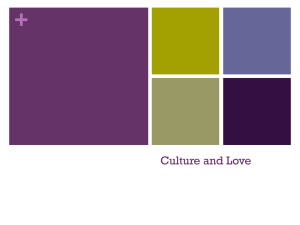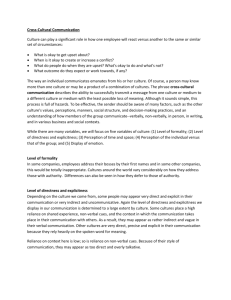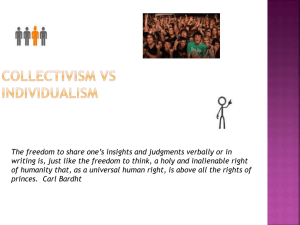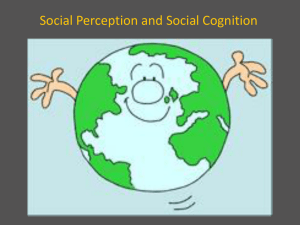Relationships have been shown to differ cross
advertisement
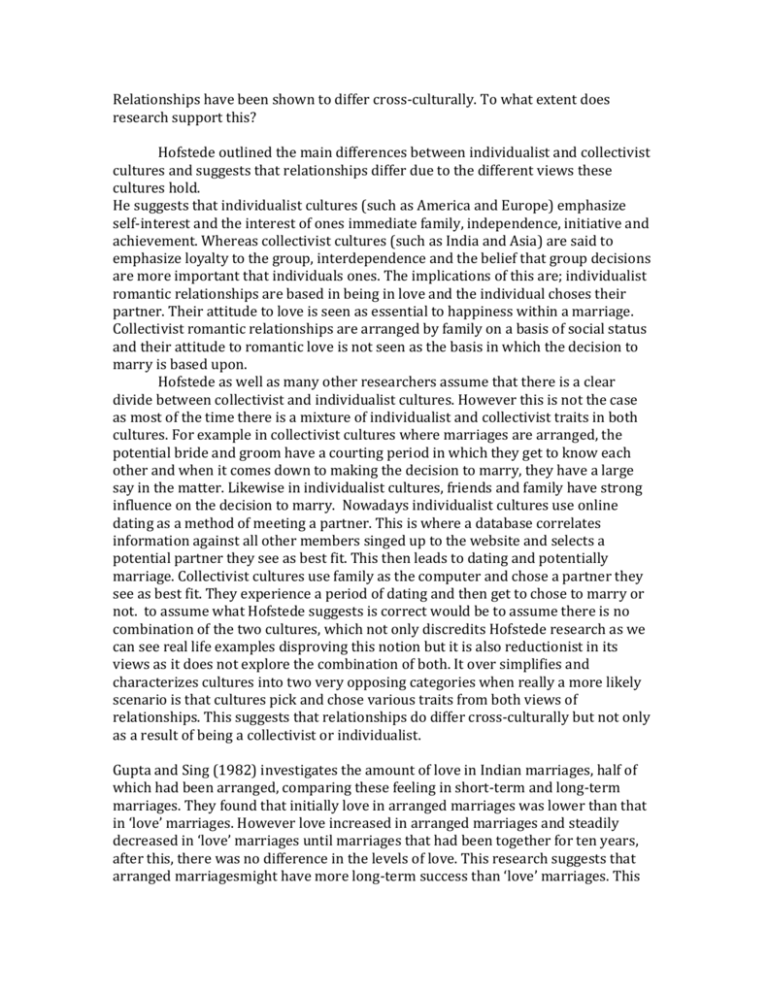
Relationships have been shown to differ cross-culturally. To what extent does research support this? Hofstede outlined the main differences between individualist and collectivist cultures and suggests that relationships differ due to the different views these cultures hold. He suggests that individualist cultures (such as America and Europe) emphasize self-interest and the interest of ones immediate family, independence, initiative and achievement. Whereas collectivist cultures (such as India and Asia) are said to emphasize loyalty to the group, interdependence and the belief that group decisions are more important that individuals ones. The implications of this are; individualist romantic relationships are based in being in love and the individual choses their partner. Their attitude to love is seen as essential to happiness within a marriage. Collectivist romantic relationships are arranged by family on a basis of social status and their attitude to romantic love is not seen as the basis in which the decision to marry is based upon. Hofstede as well as many other researchers assume that there is a clear divide between collectivist and individualist cultures. However this is not the case as most of the time there is a mixture of individualist and collectivist traits in both cultures. For example in collectivist cultures where marriages are arranged, the potential bride and groom have a courting period in which they get to know each other and when it comes down to making the decision to marry, they have a large say in the matter. Likewise in individualist cultures, friends and family have strong influence on the decision to marry. Nowadays individualist cultures use online dating as a method of meeting a partner. This is where a database correlates information against all other members singed up to the website and selects a potential partner they see as best fit. This then leads to dating and potentially marriage. Collectivist cultures use family as the computer and chose a partner they see as best fit. They experience a period of dating and then get to chose to marry or not. to assume what Hofstede suggests is correct would be to assume there is no combination of the two cultures, which not only discredits Hofstede research as we can see real life examples disproving this notion but it is also reductionist in its views as it does not explore the combination of both. It over simplifies and characterizes cultures into two very opposing categories when really a more likely scenario is that cultures pick and chose various traits from both views of relationships. This suggests that relationships do differ cross-culturally but not only as a result of being a collectivist or individualist. Gupta and Sing (1982) investigates the amount of love in Indian marriages, half of which had been arranged, comparing these feeling in short-term and long-term marriages. They found that initially love in arranged marriages was lower than that in ‘love’ marriages. However love increased in arranged marriages and steadily decreased in ‘love’ marriages until marriages that had been together for ten years, after this, there was no difference in the levels of love. This research suggests that arranged marriagesmight have more long-term success than ‘love’ marriages. This also implies the success of relationships may vary in different cultures depending on whether they believe in arranged marriages or ‘love’ marriages. However these results may have been affected by social desirability in that participants may not want to report being unhappy, as they would not want their family to know. Not only that but to admit to being unhappy in a marriage is a big deal and may potentially have negative consequences. Opposing Gupta and Sings research is Yelsma and Athhappily (1988) who compared Indian arranged marriages with Indian and north American marriages. They found that in most respects there were no differences between the two types of marriage. This does not discredit Gupta and Sings research so much as it suggests that there are not only massive differences between cultures but there are also differences within cultures. This suggests that we cannot take one set of finding and generalize then to a culture as whole – therefore the theory lacks ecological and population validity. Anderson et al carried out research into preferred female body shape across a variety of cultures and found that the most desired female body shape varied drastically between cultures. He separated the 54 cultures into four groups dependent upon how reliable the food supply was in that culture. He also divided the female body shape into ‘heavy’, ‘moderate’ and ‘slender’. He found that the more unreliable the food source the greater the preference for a heavier body shape. This may be due to an adaptive evolutionary response as heavy women may be seen as having easy access to food for themselves and a child. Regardless of the reasons why, the research suggests that relationships vary according to a reliable food source and female body shape. However this research was conducted 20 years ago when social media was not as easily accessible and didn’t have an influence over people’s opinions and preferences. The countries that preferred heavier women may now prefer slender women due to TV and magazines from western countries that portray slender women to be more desirable. Likewise in cultures that used to prefer slender women may now prefer heavier women as a result of current controversy to models and anorexia. When evaluating research, the findings have logical reasoning to explain why relationships differ cross-culturally. For example, in countries that are poor may find larger women more attractive - due to an adaptive evolutionary response to ensure best possible survival of offspring – as it signals wealth and resources. Richer counties did not need to develop this adaptive response as it was unnecessary – hence relationships differences. Cross cultural research helps us gain insight into relationships in different cultures, but we cannot assume that the samples used in the research are representative of that culture as a whole. Not only that but also all research was conducted over twenty years ago. Westen found that women born in the middle of the 19th century saw sex as vital for reproduction and not very pleasurable. Whereas those born near the end of the century described sex in a more positive light and saw it as closely linked to passionate love. These finding do not directly support my point, but they do however suggest that people’s opinions towards relationships and such can change overtime. This means that all prior research is subject a lack of time validity and that research that may have been appropriate 20 years ago may no longer be relevant.
